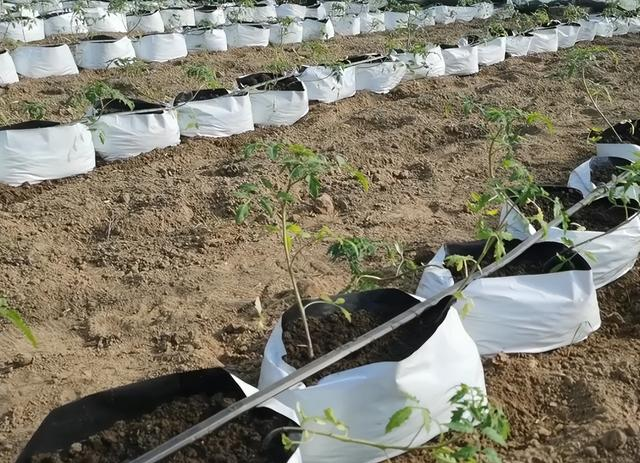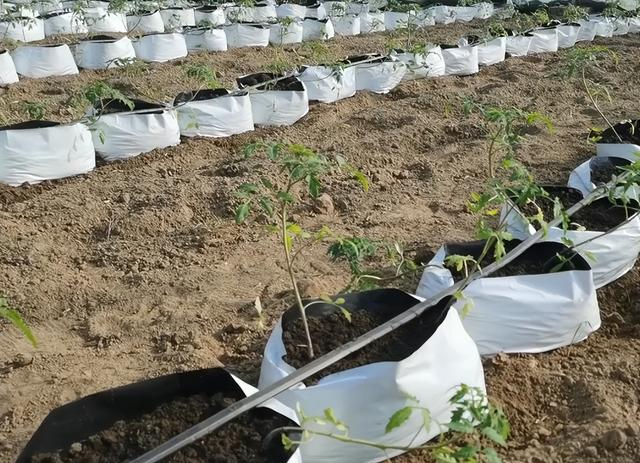How to water and fertilize vegetables in growth bags? Do these 2 points better, which has advantages over soil planting
Planting bags grow tomatoes, strawberries, cucumbers, peppers, such a seemingly troublesome planting mode, more and more farmers began to try to plant, in fact, after doing a good job, it is simpler than soil cultivation. Some farmers ask that the tomatoes have been planted with seedlings, but they do not know how to water? How is fertilization applied? How is this different from soil crop management?
There are two key places for soilless cultivation of vegetables, one is the construction of infrastructure, and the other is the management of water and fertilizer. Growing tomatoes in the planting bag is a new soilless cultivation method, and the substrate inside can use cow dung and earthworm manure, so that the infrastructure is ready. After planting seedlings, it is necessary to consider water and fertilizer management, which is somewhat different from soil planting.

- After the vegetable seedlings are colonized, they should be watered again to promote the rooting of seedlings. Whether it is soil or substrate cultivation, after colonization, it is necessary to water the colonization water thoroughly, and all the roots can absorb the water to prevent some seedlings from being able to absorb water and appear wilting and dead seedlings, so the colonization water should be watered evenly.
There are several techniques for planting vegetables in the planting bag, and there are several techniques for planting water to water evenly: First, after the substrate is bagged, first water it again, and then when watering the planting water, it is easier to water evenly. Second, double drip irrigation belts are used on the planting bag, and the water outlet hole is around the root system to prevent the root from being dehydrated and wilting, and improving the survival rate.
Vegetables after slow seedlings, when to water, depends on the amount of water held by the substrate, less than 60% to water. The substrate is better permeable, but the water retention is not as good as the soil, and the method of watering with small water should be used to stop watering when the humidity is about 90%.
- When the substrate is cultivated, the utilization rate of fertilizer water is relatively high, and there is a difference with soil cultivation. First, after the slow seedlings, vegetables must be fertilized almost every time they are watered. The diligent application of thin fertilizer can not only reduce the waste of water and fertilizer, but also will not harm the root system. However, during the slow seedling period, only water can be watered and no fertilizer can be brought, so as not to hurt the root system. If the growth of slow seedlings is weak, farmers can add seaweed essence to watering.
However, when planting soil, there is no way to fertilize multiple times a day, because the soil has better water retention and water cannot be discharged. Generally, when cultivating the soil, some farmers apply fertilizer every 10 to 20 days, and use 30 to 40 pounds of fertilizer for each fertilization. Such a high fertilizer concentration around the root system, it is easy to appear fertilizer damage.
Second, adjust the fertilization formula according to the growth of vegetables during fertilization. When planting soil, 30 pounds or more for fertilization at a time. When cultivating the substrate, it depends on the fertilizer concentration. After the fertilizer solution is prepared, the Ec value is determined with a test pen. This kind of fertilization is more scientific than how many pounds per acre is used.
Therefore, whether it is the utilization rate of water and fertilizer or the growth of the root system, a small amount of fertilization is definitely better than applying a large amount of fertilizer every once in a while. This is also an advantage of soilless cultivation, with high utilization rate of water and fertilizer and does not affect the growth of vegetables.


